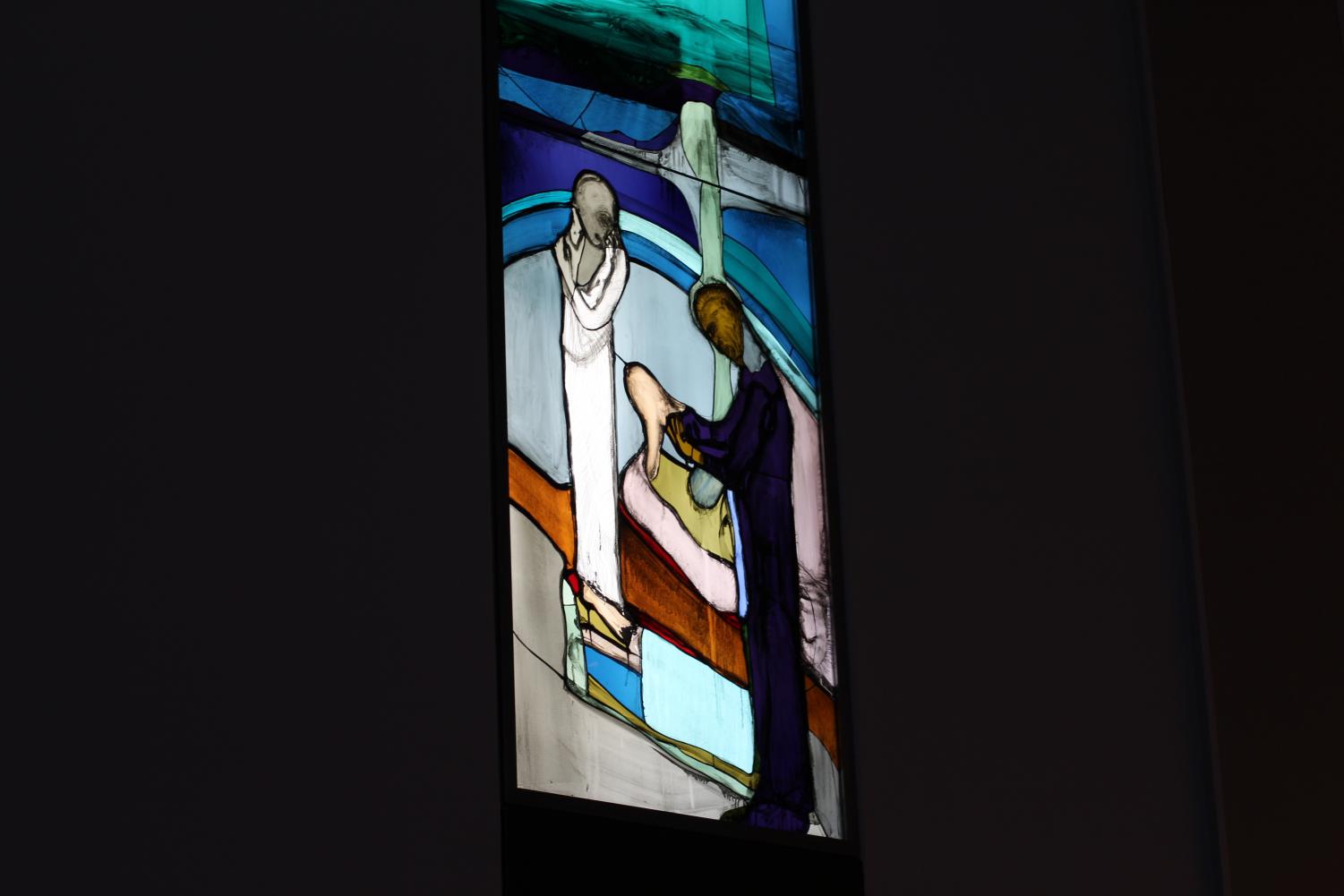In the article, “A 24K eyesore: Calvary Chapel’s redesign failure,” the author expresses a common disapproving opinion of Calvary Chapel’s artistic renovation. While many people maintain that Calvary is too extravagant, confusing or simply ugly, the writer argues that the chapel fails to uphold a Christian ideal of beauty. His argument, in brief, maintains that since God is the source and embodiment of beauty, Calvary Chapel is not beautiful because it does not communicate God to its audience. To counter this argument, I would like to propose how Calvary’s artistic renovation does reveal God and is therefore beautiful.
HOW BEAUTY RESEMBLES GOD
Consider other things in the world that are commonly called beautiful. Flowers are beautiful, but they do not look like God. How, then, could a flower be beautiful? When contemplating a flower, one may consider its interaction with the bee and the creation around it. In other words, one may consider its unity with other created things as they interact and sustain each other. One may then consider the unity of all creation, and how it is delicately intertwined and self-sufficient. As a person considers creation more and more, they may ask how creation resembles its creator in its self-sufficiency, in its intertwined nature, and wholeness, and see that the creator also has these qualities. In this way, one can appreciate the beauty of a flower, as well as the rest of creation.
HOW CONTEMPLATION LEADS TO BEAUTY
The key in comprehending beauty is contemplation. In the author’s article, he used medieval art as a good example of audience consideration because as the artists considered their illiterate audience, they portrayed Scripture in a way that their audience could comprehend. Therefore, the art was beautiful because it successfully conveyed the audience’s attention to God through meditation. Meditation and contemplation being synonymous, I believe the author and I can agree that it was through contemplation that the medieval audience could gaze on the beauty of God. But, with today’s audience at Biola overwhelmingly if not completely literate, there is no longer a need to convey the message of Scripture as directly as in the past, and makes room for abstraction and interpretation.
HOW CALVARY CHAPEL IS BEAUTIFUL
Abstraction can serve to increase contemplation and draw us closer to God better than other forms of art. If one were to look at a piece of art and understand immediately its subject, one would not gaze at it long but would move on. Abstraction serves to invite an audience to contemplation since we cannot understand it at a glance, and this contemplation is essential in drawing close to God. It is only through symbols, such as those we see in creation, that humans can ever slightly hope to comprehend God by our own intellect. We must embrace the function of contemplation in discerning beauty, and the artists employ abstract artwork in order to invite us to draw closer to God.
It is true that the images of the stained glass are not clear in their depictions of Scripture, but this does not mean that they fail to communicate God. While one can easily become stuck while trying to interpret the scenes, I would suggest contemplating the mode of communication. The artists were very intentional in their use of glass, because it employs light as its medium. Without light, the art does not exist. Light is one of the most significant symbols used in Scripture to describe the character of God, and as light illuminates and reveals the art in Calvary, God illuminates our minds through the movement of contemplation and reveals himself to us through Scripture, which the windows depict. In this way, the windows serve as a literal illuminated version of the Scripture and paint the character of God. This is only a small way that Calvary’s art points to God’s beauty, and further interpretation can be gained by extensive contemplation.
Therefore, it seems that Calvary Chapel’s renovation does bring attention to God and can be considered beautiful as it resembles him. The artists achieve this by employing abstraction to invite their audience into contemplation, through which we may learn about God. The dangerous implication of the aforementioned article is that a lack of understanding reduces a thing’s beauty. Simply because something is not understood does not mean it lacks beauty. If this were true, God would not be beautiful. Without contemplation, this redesign is a distraction and can even be considered ugly, but this is the fault of ignorance, not the artist.







